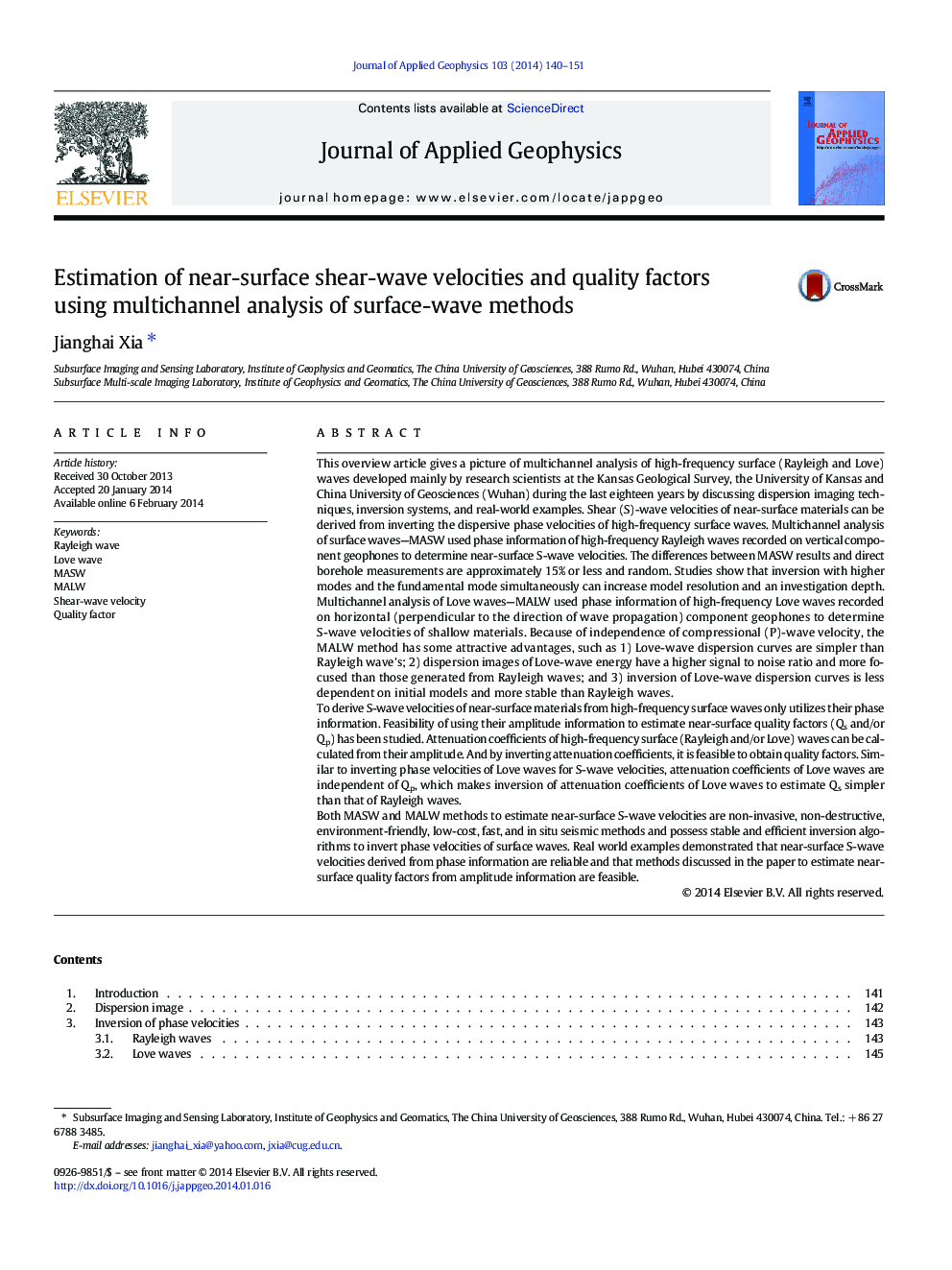| کد مقاله | کد نشریه | سال انتشار | مقاله انگلیسی | نسخه تمام متن |
|---|---|---|---|---|
| 4740303 | 1641148 | 2014 | 12 صفحه PDF | دانلود رایگان |
• This overview article gives a picture of multichannel analysis of surface waves.
• S-wave velocities are derived from phase information of Rayleigh/Love waves.
• Quality factors are derived from amplitude information of Rayleigh/Love waves.
• Other developments and challenges are discussed.
This overview article gives a picture of multichannel analysis of high-frequency surface (Rayleigh and Love) waves developed mainly by research scientists at the Kansas Geological Survey, the University of Kansas and China University of Geosciences (Wuhan) during the last eighteen years by discussing dispersion imaging techniques, inversion systems, and real-world examples. Shear (S)-wave velocities of near-surface materials can be derived from inverting the dispersive phase velocities of high-frequency surface waves. Multichannel analysis of surface waves—MASW used phase information of high-frequency Rayleigh waves recorded on vertical component geophones to determine near-surface S-wave velocities. The differences between MASW results and direct borehole measurements are approximately 15% or less and random. Studies show that inversion with higher modes and the fundamental mode simultaneously can increase model resolution and an investigation depth. Multichannel analysis of Love waves—MALW used phase information of high-frequency Love waves recorded on horizontal (perpendicular to the direction of wave propagation) component geophones to determine S-wave velocities of shallow materials. Because of independence of compressional (P)-wave velocity, the MALW method has some attractive advantages, such as 1) Love-wave dispersion curves are simpler than Rayleigh wave's; 2) dispersion images of Love-wave energy have a higher signal to noise ratio and more focused than those generated from Rayleigh waves; and 3) inversion of Love-wave dispersion curves is less dependent on initial models and more stable than Rayleigh waves.To derive S-wave velocities of near-surface materials from high-frequency surface waves only utilizes their phase information. Feasibility of using their amplitude information to estimate near-surface quality factors (Qs and/or Qp) has been studied. Attenuation coefficients of high-frequency surface (Rayleigh and/or Love) waves can be calculated from their amplitude. And by inverting attenuation coefficients, it is feasible to obtain quality factors. Similar to inverting phase velocities of Love waves for S-wave velocities, attenuation coefficients of Love waves are independent of Qp, which makes inversion of attenuation coefficients of Love waves to estimate Qs simpler than that of Rayleigh waves.Both MASW and MALW methods to estimate near-surface S-wave velocities are non-invasive, non-destructive, environment-friendly, low-cost, fast, and in situ seismic methods and possess stable and efficient inversion algorithms to invert phase velocities of surface waves. Real world examples demonstrated that near-surface S-wave velocities derived from phase information are reliable and that methods discussed in the paper to estimate near-surface quality factors from amplitude information are feasible.
Journal: Journal of Applied Geophysics - Volume 103, April 2014, Pages 140–151
